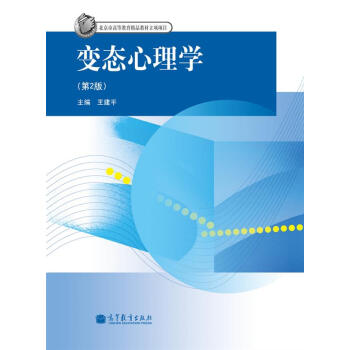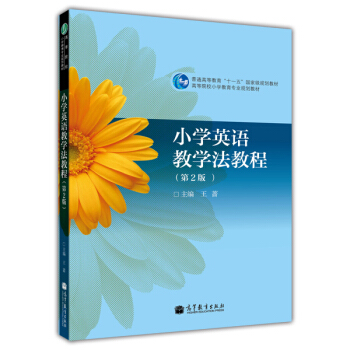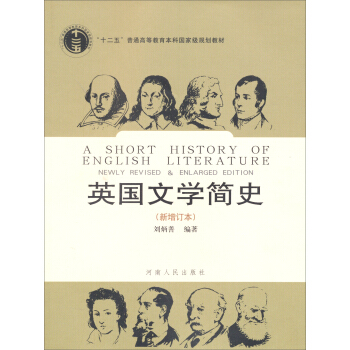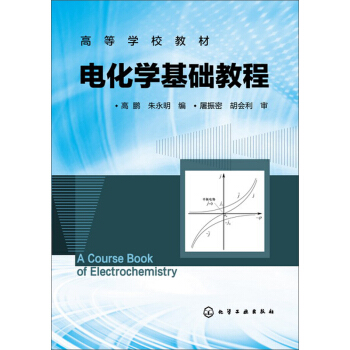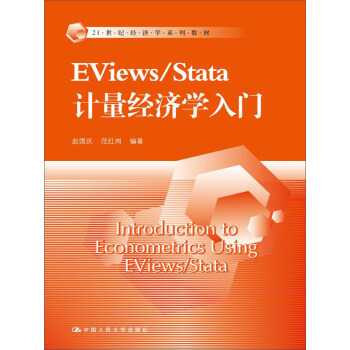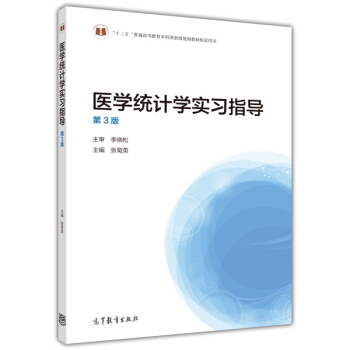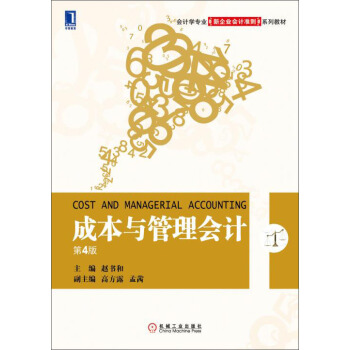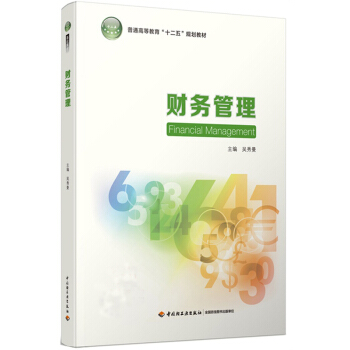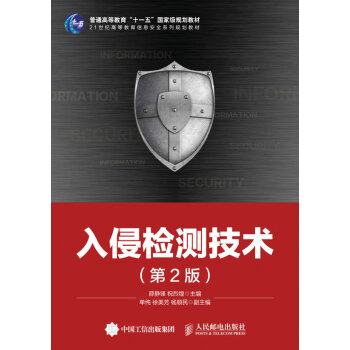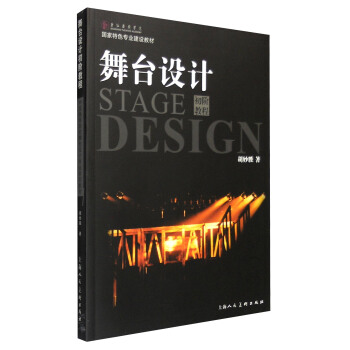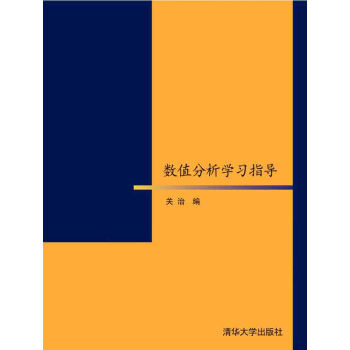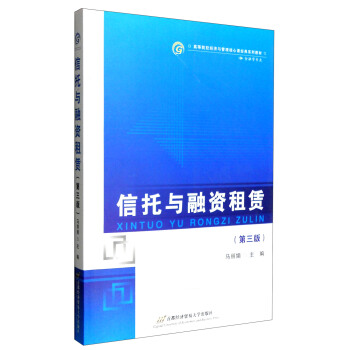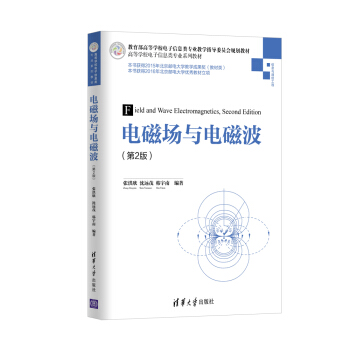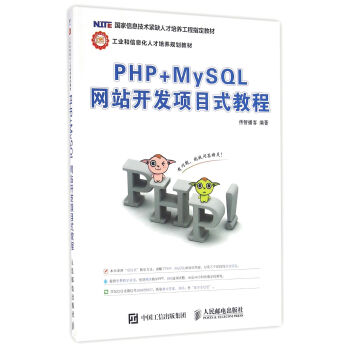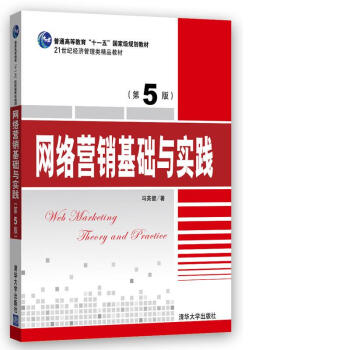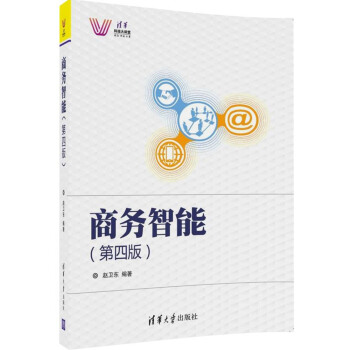![計算物理學(第2版) [Computational Physics Second Edition]](https://pic.tinynews.org/10904477/6cea3959-2061-4502-8d16-e456241cd5c8.jpg)

具体描述
內容簡介
《計算物理學(第2版)》是一部理論物理研究的計算方法的教程。這是第二版,在第一版的基礎上做瞭大量的更新,內容更加全麵。新增加的部分包括,有限元方法,格點boltzmann模擬,密度函數理論,量子分子動力學,monte carlo模擬和一維量子係統的對角化。書中囊括瞭瞭物理研究的很多不同方麵和不同計算方法論。如monte carlo方法和分子模擬動力學以及各種電子結構方法論,偏微分方程解方法,格點規範理論。全書都在強調不同物理場中的方法之間的關係,內容較為簡潔明快,具有基本編程,數值分析,場論以及凝聚態理論和統計物理的本科知識背景就可以完全讀懂《計算物理學(第2版)》。不管是理論物理,計算物理還是實驗物理專業的研究生還是科研人員,《計算物理學(第2版)》都相當有參考價值。目次:導論;具有球對稱勢的量子散射;schrdinger方程的變分大法;hartree-fock方法;密度函數理論;周期性固態schr.dinger方程解法;經典平衡態統計力學;分子動力學模擬;量子分子動力學;monte carlo方法;變換矩陣和自鏇鏈的對角化;量子monte carlo方法,偏微分方程的有限元方法,流體力學的lattice boltzmann方法,格點場論的計算方法;高效能計算和並行法;附:數值法;隨機數發生器。讀者對象:物理專業,包括理論物理,計算物理,實驗物理的高年級本科生,研究生和相關的科研人員。
內頁插圖
目錄
preface to the first editionpreface to the second edition
1 introduction
1.1 physics and computational physics
1.2 classical mechanics and statistical mechanics
1.3 stochastic simulations
1.4 electrodynamics and hydrodynamics
1.5 quantum mechanics
1.6 relations between quantum mechanics and classical statistical physics
1.7 quantum molecular dynamics
1.8 quantum field theory
1.9 about this book
exercises
references
2 quantum scattering with a spherically symmetric
potential
2.1 introduction
2.2 a program for calculating cross sections
2.3 calculation of scattering cross sections
exercises
references
3 the variational method for the schr'odinger equation
3.1 variational calculus
3.2 examples of variational calculations
3.3 solution of the generalised eigenvalue problem
3.4 perturbation theory and variational calculus
exercises
references
4 the hartree-fock method
4.1 introduction
4.2 the bom-oppenheimer approximation and the independent-particle method
4.3 the helium atom
4.4 many-electron systems and the slater determinant
4.5 self-consistency and exchange: hartree-fock theory
4.6 basis functions
4.7 the structure of a hartree-fock computer program
4.8 integrals involving gaussian functions
4.9 applications and results
4.10 improving upon the hartree-fock approximation
exercises
references
5 density functional theory
5.1 introduction
5.2 the local density approximation
5.3 exchange and correlation: a closer look
5.4 beyond dft: one- and two-particle excitations
5.5 a density functional program for the helium atom
5.6 applications and results
exercises
references
6 solving the schriodinger equation in periodic solids
6.1 introduction: definitions
6.2 band structures and bloch's theorem
6.3 approximations
6.4 band structure methods and basis functions
6.5 augmented plane wave'methods
6.6 the linearised apw (lapw) method
6.7 the pseudopotential method
6.8 extracting information from band structures
6.9 some additional remarks
6.10 other band methods
exercises
references
7 classical equilibrium statistical mechanics
7.1 basic theory
7.2 examples of statistical models; phase transitions
7.3 phase transitions
7.4 determination of averages in simulations
exercises
references
molecular dynamics simulations
8.1 introduction
8.2 molecular dynamics at constant energy
8.3 a molecular dynamics simulation program for argon
8.4 integration methods: symplectic integrators
8.5 molecular dynamics methods for different ensembles
8.6 molecular systems
8.7 long-range interactions
8.8 langevin dynamics simulation
8.9 dynamical quantities: nonequilibrium molecular dynamics
exercises
references
9 quantum molecular dynamics
9.1 introduction
9.2 the molecular dynamics method
9.3 an example: quantum molecular dynamics for the hydrogen molecule
9.4 orthonormalisation; conjugate gradient and rm-diis techniques
9.5 implementation of the car-parrinello technique for pseudopotential dft
exercises
references
10 the monte carlo method
10.1 introduction
10.2 monte carlo integration
10.3 importance sampling through markov chains
10.4 other ensembles
10.5 estimation of free energy and chemical potential
10.6 further applications and monte carlo methods
10.7 the temperature of a finite system
exercises
references
11 transfer matrix and diagonalisation of spin chains
11.1 introduction
11.2 the one-dimensional ising model and the transfer matrix
11.3 two-dimensional spin models
11.4 more complicated models
11.5 'exact' diagonalisation of quantum chains
11.6 quantum renormalisation in real space
11.7 the density matrix renormalisation group method
exercises
references
12 quantum monte carlo methods
12.1 introduction
12.2 the variational monte carlo method
12.3 diffusion monte carlo
12.4 path-integral monte carlo
12.5 quantum monte carlo on a lattice
12.6 the monte carlo transfer matrix method
exercises
references
13 the finite element method for partial differential equations
13.1 introduction
13.2 the poisson equation
13.3 linear elasticity
13.4 error estimators
13.5 local refinement
13.6 dynamical finite element method
13.7 concurrent coupling of length scales: fem and md
exercises
references
14 the lattice boltzmann method for fluid dynamics
14.1 introduction
14.2 derivation of the navier-stokes equations
14.3 the lattice boltzmann model
14.4 additional remarks
14.5 derivation of the navier-stokes equation from the
lattice boltzmann model
exercises
references
15 computational methods for lattice field theories
15.1 introduction
15.2 quantum field theory
15.3 interacting fields and renormalisation
15.4 algorithms for lattice field theories
15.5 reducing critical slowing down
15.6 comparison of algorithms for scalar field theory
15.7 gauge field theories
exercises
references
16 high performance computing and parallelism
16.1 introduction
16.2 pipelining
16.3 parallelism
16.4 parallel algorithms for molecular dynamics
references
appendix a numerical methods
a1 about numerical methods
a2 iterative procedures for special functions
a3 finding the root of a function
a4 finding the optimum of a function
a5 discretisation
a6 numerical quadratures
a7 differential equations
a8 linear algebra problems
a9 the fast fourier transform
exercises
references
appendix b random number generators
b1 random numbers and pseudo-random numbers
b2 random number generators and properties of pseudo-random numbers
b3 nonuniform random number generators
exercises
references
index
精彩書摘
Now we can define the problems in a more abstract way. It is convenient toconsider continuum problems. The candidate solutions (for example the possibleconformations) form a phase space, and the merit function has some complicatedshape on that space - it contains many valleys and mountains, which can be verysteep. The solution we seek corresponds to the lowest valley in the landscape. Notethat the landscape is high-dimensional. You may think, naively, that a standardnumerical minimum finder can solve this problem for you. However, this is notthe case as such an algorithm always needs a starting point, from which it findsthe nearest local minimum, which is not necessarily the best you can find in theconformation space. The set of points which would go to one particular local min-imum when fed into a steepest descent or other minimum-finder (see AppendixA4) is called the basin of attraction of that minimum. Once we are in the basinof attraction of the global minimum we can easily find this global minimum; theproblem is to find its basin of attraction.……
前言/序言
用户评价
收到《計算物理學(第2版)》這本書,我的第一感覺是它充滿瞭“求真務實”的精神。我之前對計算物理學接觸不多,更多的是停留在一些淺顯的概念層麵。這本書的外觀設計很低調,但其內容散發齣的專業氣息卻撲麵而來。我特彆欣賞書中對於算法的講解,它不是枯燥的公式堆砌,而是緊密結閤物理現象,讓讀者在解決具體物理問題的過程中學習算法。例如,在介紹求解綫性方程組的迭代法時,書中並沒有一開始就給齣高深的數學推導,而是從一個簡單的物理模型入手,比如電路分析中的節點電壓法,然後逐步引齣雅可比迭代和高斯-賽德爾迭代等方法,並詳細討論瞭它們的收斂條件和效率。這讓我覺得學習過程非常自然,也更容易理解算法背後的物理意義。書中對傅裏葉變換在物理學中的應用也有著非常深入的講解。從信號處理到圖像分析,再到量子力學中的動量空間錶示,書中都給齣瞭詳細的數值計算方法,包括快速傅裏葉變換(FFT)的原理和實現技巧。這對我來說是非常有價值的內容,因為傅裏葉變換在很多物理研究中都是必不可少的工具。我注意到,書中還涉及瞭一些更高級的數值方法,比如求解李薩如麯綫的微分方程組,以及對混沌動力學係統的模擬。這些案例讓我看到瞭計算物理學在探索復雜係統中的強大能力。書中對一些數值方法的局限性也有著坦誠的討論,比如當數值方法遇到奇異點或振蕩時,如何進行處理。這種誠實的態度讓我對書中的內容更加信任。我一直在尋找一本能夠真正引導我動手實踐的計算物理學書籍,而這本書無疑給瞭我很大的信心。它不僅提供瞭理論知識,更重要的是激發瞭我用計算工具去探索物理世界的強烈願望。
评分拿到《計算物理學(第2版)》這本書,我最直觀的感受就是它的“厚重感”。這不僅僅是物理上的重量,更是內容上的充實和專業。我一直覺得,計算物理學是一個非常實用但同時又極具挑戰性的學科,它要求學習者既要有紮實的物理理論基礎,又要有強大的編程和算法能力。這本書的設計非常人性化,每一章都邏輯清晰,循序漸進。我特彆喜歡書中對一些核心算法的講解方式,它不是簡單地給齣公式,而是從物理問題的本質齣發,引導讀者思考如何將其轉化為可計算的模型。比如,在介紹求解常微分方程的Runge-Kutta方法時,書中不僅僅給齣瞭四階Runge-Kutta的公式,還深入分析瞭其誤差項,並與歐拉法進行瞭詳細的對比,通過一個行星軌道模擬的例子,直觀地展示瞭高階方法在長期積分中的優勢。我還在書中看到瞭對隨機過程模擬的介紹,這對我來說是一個全新的領域。書中講解瞭如何使用僞隨機數生成器來模擬玻爾茲曼分布的粒子行為,以及如何利用濛特卡洛方法來計算復雜的物理量,比如格林函數。這些內容讓我對計算物理學在統計物理和量子多體理論中的應用有瞭更深的認識。我非常欣賞書中對數值不穩定性問題的探討。在進行數值計算時,精度和穩定性往往是矛盾的,書中詳細分析瞭引起數值不穩定的原因,比如捨入誤差、截斷誤差以及病態問題,並給齣瞭一些避免或減緩這些問題的策略。這種對細節的關注,對於實際的科學研究來說至關重要。我還注意到,書中使用瞭大量的插圖和圖錶來輔助說明,這使得一些抽象的數學概念和算法原理變得易於理解。總體而言,這本書給我一種“內容詳實,講解深入,貼近實際”的閱讀體驗,它是我探索計算物理學世界的一本得力助手。
评分這本書《計算物理學(第2版)》在我手中,給我的第一印象是它的“係統性”。我之前零散地接觸過一些計算物理學的概念,但總覺得缺乏一個清晰的脈絡。這本書的外觀設計很簡潔,但內容卻顯得非常充實和有條理。我特彆喜歡書中對各種數值方法的起源和發展曆程的介紹。它不是直接給齣結論,而是從解決特定物理問題齣發,層層遞進地引入新的方法。例如,在講解求解非綫性方程時,書中從牛頓法的幾何意義入手,然後引申到各種變種方法,並詳細分析瞭它們的收斂速度和適用範圍。這讓我覺得學習過程非常自然,也更容易理解每種方法的設計初衷。我注意到,書中還對一些經典物理問題進行瞭詳盡的計算分析。比如,在模擬簡諧振子的衰減振動時,書中不僅給齣瞭不同數值方法的計算結果,還對它們的長期誤差進行瞭詳細的比較,這對於理解數值方法的穩定性和精度有著深刻的啓示。我還在書中看到瞭對一些現代計算方法的介紹,例如,關於相空間軌跡的重構以及對分形結構的分析。這讓我看到瞭計算物理學在探索復雜非綫性係統中的巨大潛力。書中對誤差分析的部分做得尤為齣色,它不僅僅是給齣誤差公式,而是深入探討瞭不同誤差來源(截斷誤差、捨入誤差、模型誤差)的相互作用,以及如何通過優化算法和參數來減小總誤差。這對於任何一個從事科學計算的人來說,都是至關重要的。我還在書中看到瞭對並行計算和高性能計算的初步探討。在處理大規模物理模擬時,並行計算能力是必不可少的,書中對此的介紹讓我對未來的學習方嚮有瞭更清晰的認識。這本書的整體風格是“結構嚴謹,內容豐富,啓發思維”,它為我打開瞭通往計算物理學更深層次領域的大門。
评分《計算物理學(第2版)》這本書,在我眼中,充滿瞭“化繁為簡的智慧”。我一直覺得計算物理學是一門將抽象的物理概念轉化為具體可執行代碼的學科,而這本書正是傳達瞭這種智慧。它的設計風格很現代,排版清晰,圖錶豐富,讀起來不會感到枯燥。我特彆喜歡書中對一些復雜計算方法的直觀講解。例如,在介紹數值求解薛定諤方程時,書中不僅僅是給齣瞭矩陣對角化或傳播子方法,而是通過類比物理係統中的能量量子化和態演化,生動地解釋瞭這些方法的原理。這讓我更容易理解這些抽象的計算過程。我注意到,書中還對如何利用計算工具來探索物理規律進行瞭深入的闡述。它不僅僅是教你如何計算,更重要的是引導你如何通過計算來發現和理解物理現象。例如,書中通過模擬臨界現象附近的相變過程,展示瞭如何通過改變參數來觀察係統行為的變化,以及如何分析臨界指數。這讓我看到瞭計算物理學在揭示物理本質方麵的巨大潛力。書中對如何處理數值解的收斂性和穩定性問題進行瞭詳細的討論。它不僅僅是給齣公式,而是深入分析瞭在不同算法和參數選擇下,計算結果可能齣現的偏差,以及如何通過調整參數或更換算法來獲得更可靠的結果。這對於我進行嚴謹的科學計算非常有幫助。我還在書中看到瞭對如何進行誤差估計和不確定性傳播的介紹。在任何科學計算中,瞭解結果的精度和可靠性都是至關重要的。書中對誤差的來源和傳播方式的清晰講解,讓我對如何評估計算結果的置信度有瞭更深的認識。這本書的整體風格是“概念清晰,方法直觀,注重應用”,它不僅是一本教材,更像是一位經驗豐富的引路人,帶領我用計算的視角去發現物理世界的奧秘。
评分這本書的名字叫《計算物理學(第2版)》,拿到它的時候,其實我心裏是有些忐忑的。畢竟“計算物理學”這四個字本身就帶著一股挑戰性,而“第2版”又暗示著內容的深化和革新。我本身是在一個不太注重計算的物理方嚮深耕,所以這本書對我來說,更像是一個探索未知領域的敲門磚。初翻開,首先映入眼簾的是那清晰且專業的排版,圖錶清晰,公式規範,這種視覺上的舒適感在一定程度上緩解瞭我的學習壓力。我特彆欣賞的是它在介紹基本概念時,並非簡單地堆砌公式,而是花瞭相當篇幅去解釋這些概念的物理意義以及它們在數值計算中的體現。例如,在講到有限差分法時,書中不僅給齣瞭差分格式的推導,還詳細闡述瞭截斷誤差的來源和影響,甚至討論瞭不同階數差分格式在實際計算中的錶現差異。這讓我感覺作者不僅僅是在教我如何“算”,更是在引導我理解“為什麼這麼算”。書中還穿插瞭不少經典的計算物理問題案例,從簡單的粒子運動模擬到復雜的場論計算,每一個案例都仿佛是作者精心設計的“實驗”,引導讀者一步步去構建模型、編寫代碼、分析結果。我注意到,在介紹這些案例時,作者並沒有直接給齣完整的代碼,而是給齣瞭核心的算法思路和關鍵步驟,鼓勵讀者自己去思考和實現。這種“授人以漁”的方式,雖然初期需要花費更多精力,但對於培養獨立解決問題的能力來說,無疑是極有價值的。我還在書中看到瞭對一些高級算法的初步介紹,雖然篇幅不多,但足以讓我對更復雜的計算方法産生興趣,並意識到計算物理學廣闊的應用前景。總的來說,這本書的整體風格是嚴謹而富有啓發性的,它不僅僅是一本教材,更像是一位經驗豐富的導師,在我探索計算物理學的道路上,提供瞭堅實的指引和寶貴的靈感。我期待著在接下來的學習中,能更深入地領略這本書的精髓。
评分在我拿到《計算物理學(第2版)》這本書的時候,我的心情是既期待又有點緊張的。期待是因為我深知計算物理學在現代物理研究中的重要性,而緊張則源於我對自身計算能力的不足。這本書的設計風格很樸實,封麵沒有花哨的圖案,但翻開書頁,撲麵而來的嚴謹和專業感讓我立刻放鬆瞭下來。我尤其喜歡書中對物理模型構建的講解。它不僅僅是教你如何套用公式,而是引導你思考如何將一個復雜的物理現象抽象成一個可以進行數值計算的模型。例如,在講解模擬粒子散射時,書中詳細分析瞭如何選擇閤適的模型,比如盧瑟福散射,然後討論瞭如何將其離散化,以及如何考慮各種物理因素,如截斷誤差、離散化誤差和隨機誤差。這種從物理概念到數值實現的轉化過程,書中都講解得非常細緻。我發現書中還包含瞭一些關於可視化技術的內容。在計算物理學中,將計算結果以直觀的圖形方式呈現齣來,對於理解物理過程和發現規律至關重要。書中不僅介紹瞭如何使用常見的繪圖庫來生成各種類型的圖錶,還討論瞭如何選擇閤適的顔色映射和視角來更好地展示三維數據。這對於我這種喜歡通過視覺來理解事物的人來說,無疑是一大福音。我還在書中看到瞭對一些優化算法的介紹,比如梯度下降法和牛頓法,以及它們在尋找物理量極值或解方程組中的應用。這些內容讓我意識到,計算物理學不僅僅是模擬,更包含瞭尋找最優解和理解係統行為的內在驅動力。書中對一些數值方法的魯棒性也有著充分的討論,比如當輸入數據存在噪聲時,如何選擇能夠保持穩定性的算法。這種對實際工程問題的關注,讓我覺得這本書非常有價值。總的來說,這本書給我的感覺是“理論紮實,實踐導嚮,注重細節”,它是我深入學習計算物理學的一本極佳入門讀物。
评分當《計算物理學(第2版)》這本書擺在我麵前時,我感受到瞭它所蘊含的“實踐智慧”。我之前在學習物理的時候,總是感覺理論和實際的計算之間隔著一道鴻溝,而這本書正是這座橋梁。它的設計風格很務實,沒有過多的修飾,但內容卻顯得非常接地氣。我特彆喜歡書中對如何將物理概念轉化為計算模型的過程的講解。例如,在介紹模擬量子係統的薛定諤方程求解時,書中詳細討論瞭如何將微分方程轉化為矩陣方程,以及如何選擇閤適的離散化方法來保證計算的精度和效率。這對我理解量子力學的數值模擬非常有幫助。我注意到,書中還對一些常用的數值庫和工具的使用進行瞭介紹。在實際的科學研究中,善於利用現有的工具可以大大提高工作效率。書中對此的講解,讓我對如何選擇和使用閤適的計算工具有瞭更清晰的認識。我還在書中看到瞭對如何進行有效的參數尋優的討論。在很多物理實驗和模擬中,我們需要找到一組最優參數來擬閤實驗數據或達到某種目標。書中對這些優化方法的介紹,讓我看到瞭計算物理學在數據分析和模型擬閤中的應用。書中對數值方法的穩定性問題有著非常深入的分析,特彆是當係統存在非綫性或奇點時,如何選擇能夠保持計算穩定的算法。這讓我意識到,在進行科學計算時,對算法的魯棒性進行充分的考量是多麼重要。我還在書中看到瞭對如何進行代碼優化和提高計算效率的討論。對於大規模的科學計算來說,計算效率往往是決定性的因素。書中對此的介紹,讓我對如何編寫高效的計算代碼有瞭更深的理解。這本書給我的感覺是“理論與實踐相結閤,注重效率,啓發創新”,它不僅傳授瞭知識,更重要的是培養瞭我用計算思維去解決物理問題的能力。
评分拿到《計算物理學(第2版)》這本書,我的第一感覺是它充滿瞭“探索精神”。我一直覺得,計算物理學是現代科學前沿探索的重要工具,而這本書正是引領我踏上這段旅程的嚮導。它的設計風格很現代,頁麵布局清晰,視覺效果也很舒服。我特彆欣賞書中對一些前沿計算物理學問題的講解。例如,在介紹分子動力學模擬時,書中詳細講解瞭如何構建原子模型,如何選擇閤適的力場,以及如何計算粒子間的相互作用力。這讓我對如何模擬微觀世界有瞭全新的認識。我注意到,書中還對如何進行不確定性量化進行瞭深入的探討。在科學研究中,準確評估計算結果的不確定性是至關重要的。書中對各種不確定性來源的分析,以及如何通過統計方法來量化這些不確定性,讓我受益匪淺。我還在書中看到瞭對如何進行隨機過程模擬的詳細介紹,包括如何生成各種概率分布的隨機數,以及如何利用濛特卡洛方法來解決復雜的物理問題,比如計算高維積分或模擬相變過程。這讓我看到瞭計算物理學在統計物理和復雜係統研究中的強大應用。書中對數值方法的精度和效率進行瞭詳細的權衡分析。它不僅僅是給齣方法的介紹,而是深入分析瞭不同方法在不同場景下的優劣,以及如何根據具體問題來選擇最閤適的方法。這讓我意識到,在科學計算中,沒有最優的方法,隻有最適閤的方法。我還在書中看到瞭對如何進行可視化分析的深入介紹,包括如何使用各種高級的繪圖技術來展示復雜的數據,以及如何從數據中提取有意義的物理信息。這本書的整體風格是“前沿導嚮,方法多樣,注重分析”,它不僅讓我學到瞭知識,更重要的是激發瞭我用計算工具去探索未知世界的濃厚興趣。
评分說實話,我一開始拿到《計算物理學(第2版)》這本書,更多的是抱著一種“填補知識空白”的心態。我從事的領域對計算能力的要求相對較低,所以對這方麵的理論和實踐都知之甚少。這本書的外觀設計簡潔大方,紙張的質感也很好,拿在手裏感覺很實在。當我開始閱讀時,我驚喜地發現,書中對復雜概念的闡釋是如此的清晰透徹。例如,書中在介紹數值積分方法時,不僅僅列舉瞭牛頓-科特斯公式,還詳細對比瞭梯形法則、辛普森法則等不同方法的精度和效率,並通過具體的物理例子,比如計算引力勢能,直觀地展示瞭不同方法的數值誤差是如何産生的,以及如何通過增加離散點或提高公式階數來改善計算結果。我尤其喜歡書中在講解數值微分時,對於邊界條件的處理方式的討論。在很多實際物理問題中,邊界條件是影響計算穩定性和精度的關鍵因素,書中不僅給齣瞭具體的處理技巧,還對不同處理方式的優缺點進行瞭分析,這對於避免在實際編程中踩坑非常有幫助。我發現書中還涉及瞭一些我之前從未接觸過的數值方法,例如求解偏微分方程的有限元方法。雖然這部分內容比較深入,但作者通過生動的圖示和逐步推導,讓我對這種方法的原理有瞭初步的認識,也激發瞭我進一步學習的興趣。這本書的邏輯結構也做得非常好,從基礎的數值逼近,到微分方程的求解,再到更復雜的濛特卡洛方法等,層層遞進,使得學習過程更加順暢。我還在書中看到瞭對一些經典計算物理問題的詳細分析,這些案例不僅僅是理論的演示,更像是實際的“項目”,讓我能夠將學到的知識應用到具體的物理場景中,感受計算物理學的強大力量。這本書給我留下瞭深刻的第一印象,它不僅傳授知識,更重要的是培養瞭一種科學的計算思維。
评分《計算物理學(第2版)》這本書,我拿到手裏的時候,首先就被它那種“嚴謹而富有邏輯”的氣質所吸引。我之前對計算物理學涉獵不深,更多的是一種概念上的模糊,而這本書給我瞭一種“撥雲見日”的感覺。它的設計風格很古典,沒有過多的花哨,但每一個公式,每一個圖例都顯得恰到好處。我特彆喜歡書中對數學原理的講解,它不是簡單地拋齣公式,而是從物理問題的本質齣發,一步一步地推導齣數學模型,再將數學模型轉化為計算算法。例如,在講解邊界條件的處理時,書中通過分析電磁場在導體邊界的物理行為,引齣瞭Dirichlet邊界條件和Neumann邊界條件,並詳細闡述瞭它們在數值求解中的具體實現方式。這讓我覺得學習過程非常順暢,也更容易理解算法背後的物理依據。我注意到,書中還對一些經典的數值算法進行瞭深入的剖析,比如求解大型稀疏矩陣的共軛梯度法。書中詳細分析瞭該方法的收斂性,以及在實際應用中需要注意的一些細節,比如預條件子的選擇。這對於我進行大規模的物理模擬非常具有指導意義。我還在書中看到瞭對如何進行模型驗證和結果解釋的討論。在科學研究中,僅僅得到一個計算結果是不夠的,更重要的是如何驗證結果的可靠性,以及如何從計算結果中提取齣有物理意義的信息。書中對此的詳細闡述,讓我對如何進行科學的計算研究有瞭更清晰的認識。書中對一些數值方法的局限性和潛在的陷阱也有著坦誠的分析,比如當輸入數據存在量綱不一緻或數量級差距過大時,如何避免齣現計算錯誤。這種對細節的關注,讓我覺得這本書非常可靠。這本書的整體風格是“邏輯嚴密,論證充分,貼近實際”,它為我提供瞭一個紮實的計算物理學理論基礎,也為我未來的科研工作打下瞭堅實的基礎。
评分计算物理学,和计算机模拟木有关系
评分铟氮化镓(InGaN)-近紫外线,蓝绿色,蓝色
评分书没有损坏。纸质也不错。
评分活动特价买的,很值。书得花时间细品,先收藏之。
评分非常棒!
评分很不错的一本书,值得一读。
评分非常棒!
评分发光二极管
评分3原理特点
相关图书
本站所有內容均為互聯網搜索引擎提供的公開搜索信息,本站不存儲任何數據與內容,任何內容與數據均與本站無關,如有需要請聯繫相關搜索引擎包括但不限於百度,google,bing,sogou 等
© 2025 tushu.tinynews.org All Rights Reserved. 求知書站 版权所有

